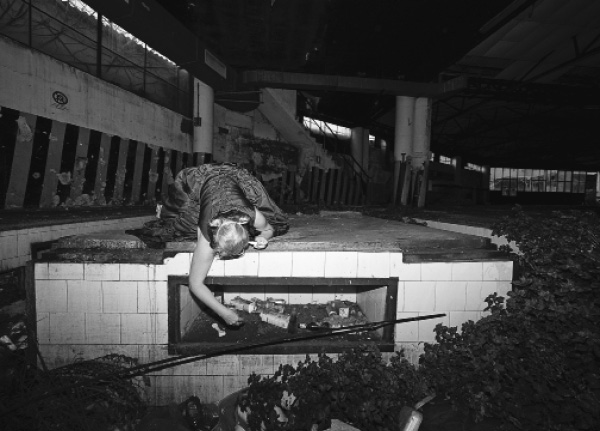
THE BONE PROJECT
first performed on January 15, 2017
landscape settings, Rostock, Germany
performed twelve times in 2017
ANDREA ZITTLAU
Rostock, Germany
112544102a112544102n112544102d112544102r112544102e112544102a112544102.112544102z112544102i112544102t112544102t112544102l112544102a112544102u112544102@112544102u112544102n112544102i112544102-112544102r112544102o112544102s112544102t112544102o112544102c112544102k112544102.112544102d112544102e
THE BONE PROJECT
ANDREA ZITTLAU
Every month, I commit myself to do a performance that the Italian-German photographer Emiliano Leonardi documents. The image finds its final form on a postcard that also includes a poem and needs to be mailed by the person who receives the card. Each year, the performance cycle differs. In 2017, my focus was on ephemerality. I made unfired clay bones and installed them in outdoor landscape settings, where they gradually disappeared. While making the sculpture as well as the act of placing the bones qualify as performances in the traditional sense, I would like to insist that both only enabled what I consider to be the central act of performance here: the bones interacting with the landscape. By publicizing the coordinates of the durational performance event, I summoned an audience that could watch the installation and its performance at different stages. The last postcard of the year came with a clay bone that receivers are asked to place somewhere themselves, and watch it dissolve. Everyone is encouraged to create their personal performance ritual. The number of final bones was limited to 250.
It was of particular significance to me that the objects were bones and thus traditional symbols of memory and monuments. However, it was also important that they were not recognizable as human bones, rather as bone-shaped sculptures that link life and death in a wider context, allowing for multiple connections to time, a performance of nature and the art of letting go. In the current setting of the environmental crisis, I felt that a conscious observation of the rhythm of natural forces and a shift away from human action was a first step in growing a connection to our surroundings. While the connection to the performances of Ana Mendieta are obvious, I would also like to understand this project in the wider context of shrines and altar cultures that are widespread, as well as through Donna Haraway’s concept of the Chthulucene, a necessary shift in human-nonhuman interaction.